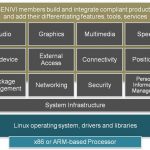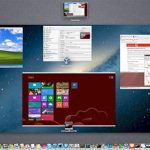You are currently viewing SemiWiki as a guest which gives you limited access to the site. To view blog comments and experience other SemiWiki features you must be a registered member. Registration is fast, simple, and absolutely free so please,
join our community today!
Virtualization is software that separates physical infrastructures to create various dedicated resources. It is the fundamental technology that powers cloud computing.
“Virtualizationsoftware makes it possible to run multiple operating systems and multiple applications on the same server at the same time,”… Read More
Everyone is aware of ARM’s dominance in mobile devices and their likely dominance in IoT, but what about servers? ARM has been making a play for this area but conventional wisdom is that fortress Intel will protect its server market at all costs. You’ll hear that servers are not so much about compute power, they’re more about I/O and… Read More
These days, most of the innovative concepts in our cars are driven by electronics; not only infotainment systems, but also instrument clusters, safety systems including ADAS (Advanced Driver Assistance Systems), information displays, night vision, airbags, backup camera, stability control, and so on. The upcoming connected… Read More
The evaluation of the number of connected (IoT) systems by 2020 varies depending on the source, but we should see in the range of 30 billion IoT devices by that date. We already know some of the basic requirements: such a device will have to be connected, low cost, ultra-low power and… secure. The first three are key enablers, but we … Read More
How do you run multiple operating systems on the same processor? You use virtualization and you run a hypervisor underneath all the so-called “guest” operating systems. So what is virtualization?
Virtualization started with VM/370 developed in 1972 at IBM (the current version is still in use). Here is how it works.… Read More



